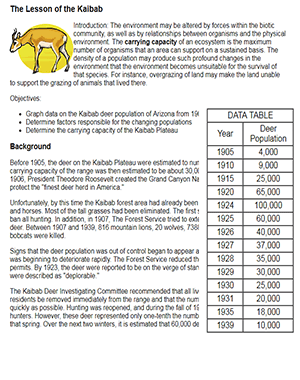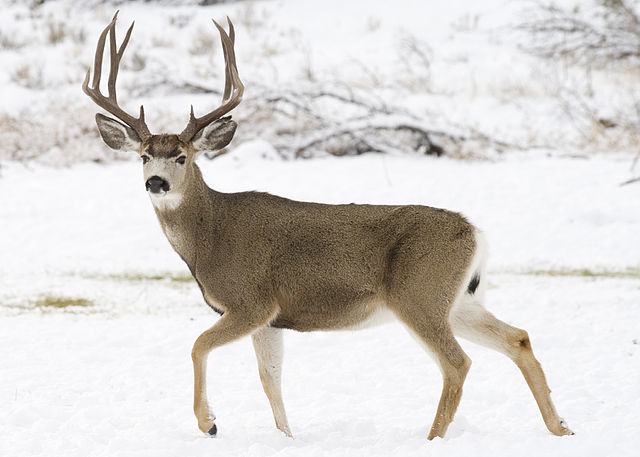
At the beginning of the 20th century, the Kaibab Plateau was witness to an interesting experiment in what some might call population engineering. The plateau’s pre-1905 population of deer was estimated to be around 4,000. The average carrying capacity of the land was unknown, in part because this concept was not widely used by naturalists at the time.
In this activity, students graph the number of Kaibab deer on the plateau after predators were removed. Predators were removed as a way to increase deer populations, but may have had the opposite effect. Records show that from about 1905 to 1931, a total of 781 mountain lions, 30 wolves, 4,849 coyotes, and 554 bobcats were killed, along with an unknown number of bald eagles..
In this activity, students read about the background of the Kaibab plateau, graph data, and then analyze the data. Follow-up discussions link the case to previous lessons on keystone species and carrying capacity.

Grade Level: 8-10
Time Required: 20-30 minutes
HS-LS2-1 Use mathematical and/or computational representations to support explanations of factors that affect carrying capacity of ecosystems at different scales.

